More apps, more stores, more money: Windows 11 is a win for developers
The new Microsoft Store isn't just a fresh look. It's a new approach by Microsoft when it comes to app development.
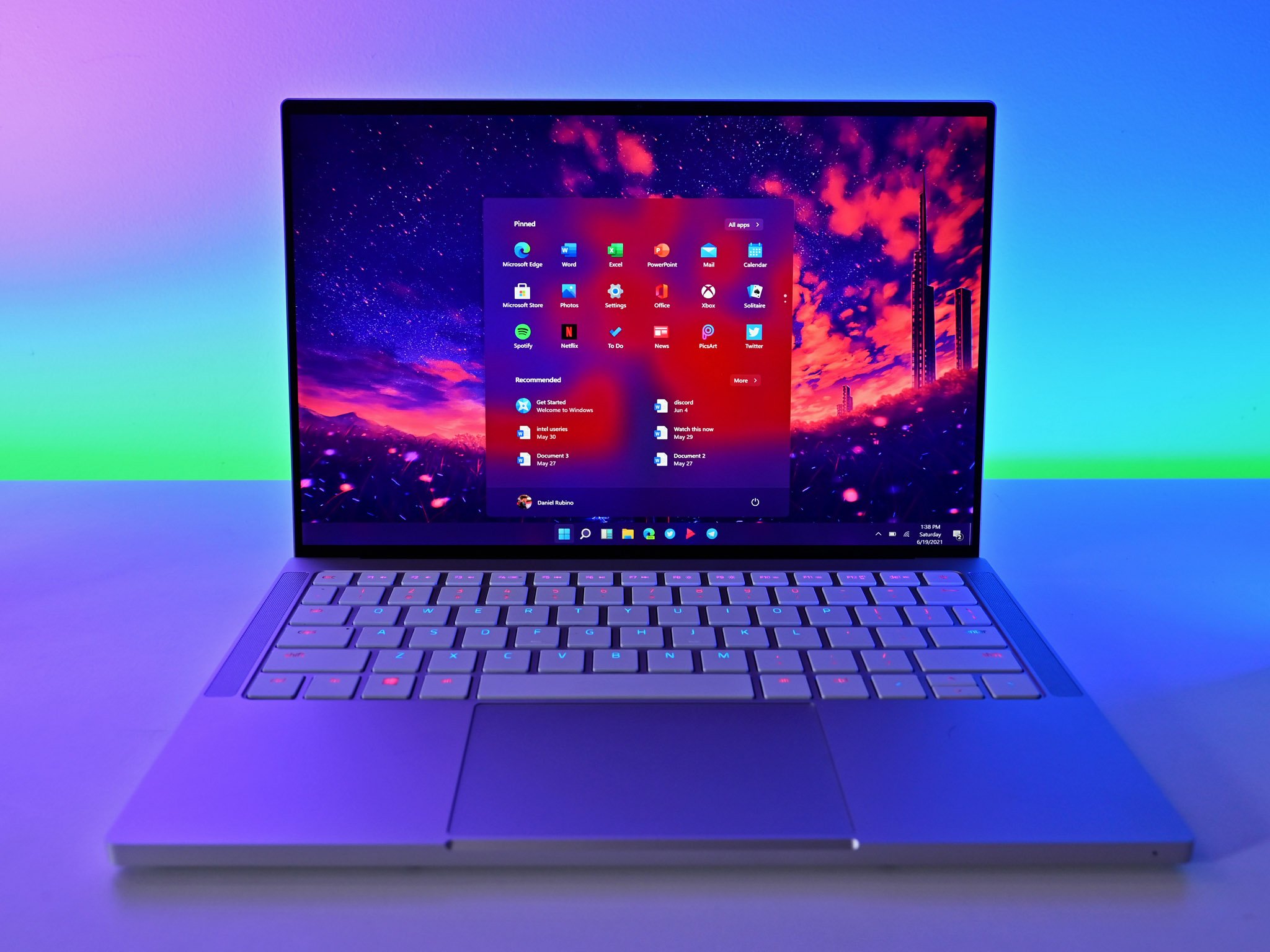
What you need to know
- Windows 11 features a new Microsoft Store and new options for app development.
- The Microsoft Store will allow developers with their own commerce platforms to keep 100% of revenue.
- Win32, UWP, PWA, and even Android apps will work on Windows 11.
Microsoft announced Windows 11 today, and while its new features are important, some of the biggest news isn't about what Microsoft made; it's about what developers will make to run on the new operating system. Windows 11 has a new Microsoft Store (which will also come to Windows 10), new developer options, and even support for Android apps through the Amazon Store. All of these add up to a platform that's intended to be much more alluring to developers. Microsoft outlined the improvements and changes in a blog post.
More types of apps
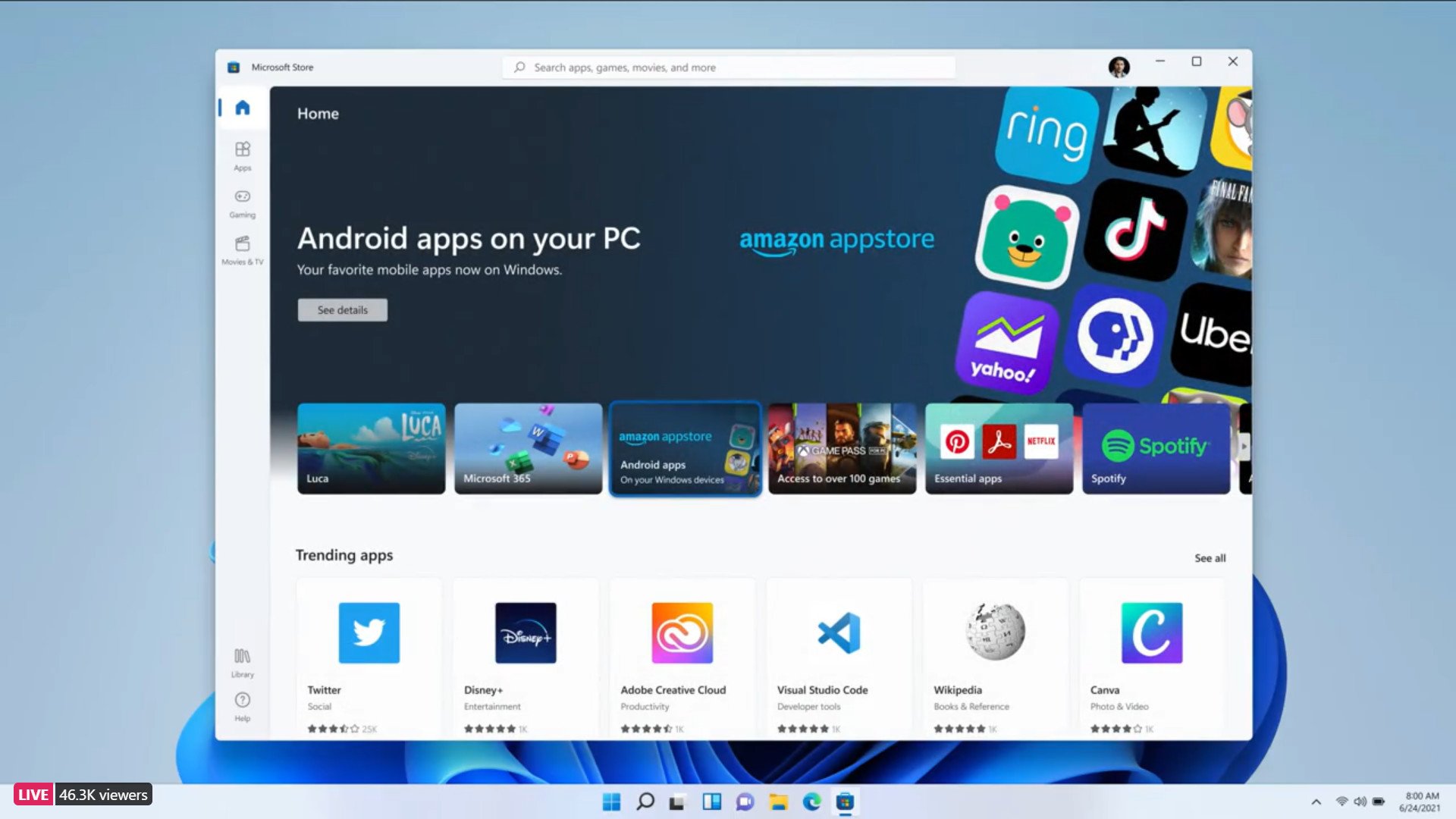
Microsoft wants apps in the Microsoft Store, and it doesn't seem particularly bothered about what types of apps those are. Starting today, developers can use Win32, .NET, UWP, Xamarin, Electron, React Native, Java, and Progressive Web Apps packaging technology to get apps published in the Microsoft Store. That means that many developers don't have to change how their app works to get it into the store.
With the surprise announcement of Android apps on Windows 11 through the Amazon Store, developers have yet another way to get apps onto PCs. Windows 11 will be able to run Win32, UWP, PWA, and Android apps.
For years, many major Microsoft apps weren't in the Microsoft Store. That won't be the case anymore, as Teams, Office, Edge, Visual Studio are on the way to the Microsoft Store. Even Paint and Notepad will be available through it.
Microsoft also managed to get some major app makers on board already. Disney+, TikTok, Zoom, and the Adobe Creative Cloud will all be available through the Microsoft Store.
More ways to find apps
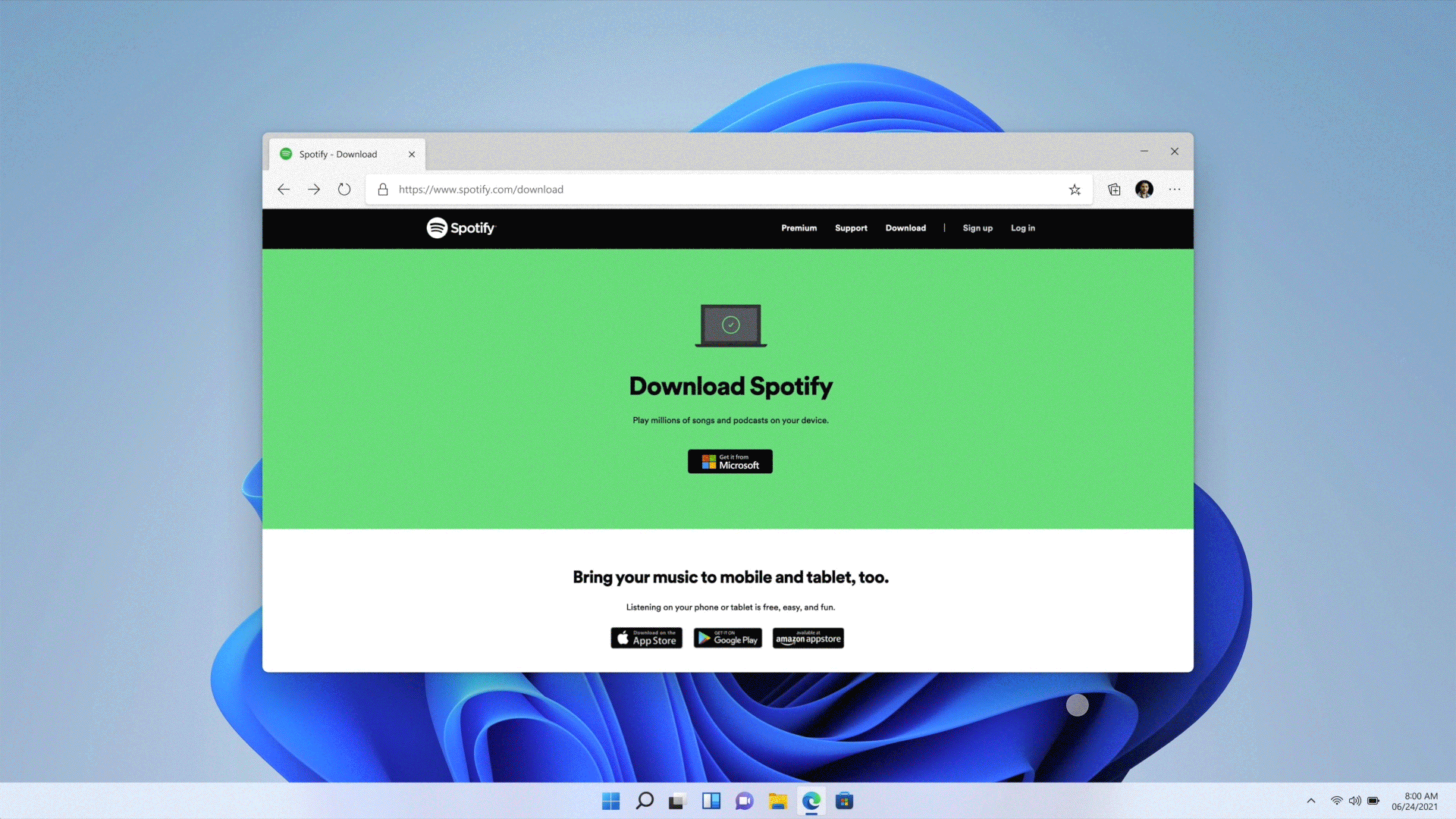
The Microsoft Store was redesigned from the ground up with a new interface that has more room to show off apps. Stories are on the way to the store as well to highlight apps with editorial content. This should help with discoverability, which is a big reason to get an app onto the Microsoft Store.
For some developers, discoverability isn't an issue. Services like Spotify and Netflix don't need the Microsoft Store to get the word out about their apps. So here's how the Microsoft Store engages those parties.
Get the Windows Central Newsletter
All the latest news, reviews, and guides for Windows and Xbox diehards.
With Windows 11, people who find an app directly through a website will be able to use a "pop-up" store to download the app through the Microsoft Store. For example, when people go to Spotify's website and click on the Microsoft Store download badge, a window from the Microsoft Store will pop up that lets people install the app.
With support for Android apps through the Amazon Store, people will be able to search for apps through the Microsoft Store and acquire them through the Amazon Store.
Notably, Amazon apps do not support Google Play, but the long-term plan is to get more Android stores into the Microsoft Store. As explained by our executive editor Daniel Rubino, "That could mean Samsung and even Google Play down the road as Amazon alone is not the end goal."
More money
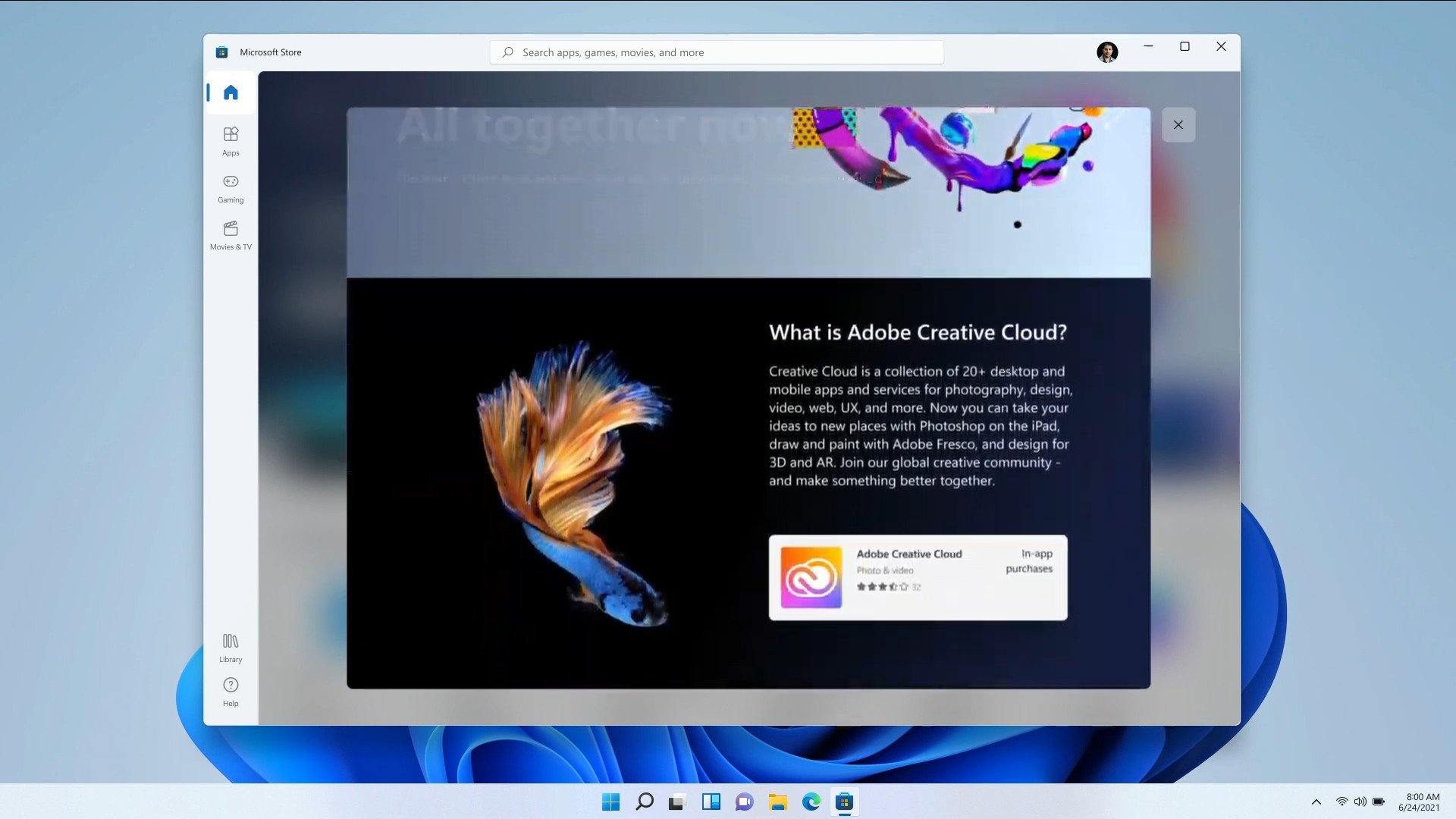
Microsoft could roll out all of the app-related features in the world, but it wouldn't matter much if using the Microsoft Store wasn't profitable for developers. Some developers have avoided the Microsoft Store because they didn't want to give up any revenue. The thought process being, why give away any percent of revenue when people can just grab an app from a website?
That shouldn't be an issue anymore, as developers can keep 100% of their revenue on Windows 11 if they have their own commerce platform. The change means that companies like Adobe can have the Adobe Creative Suite in the Microsoft Store.
The option to use third-party commerce platforms will be available starting July 28.
A smart play to win back devs
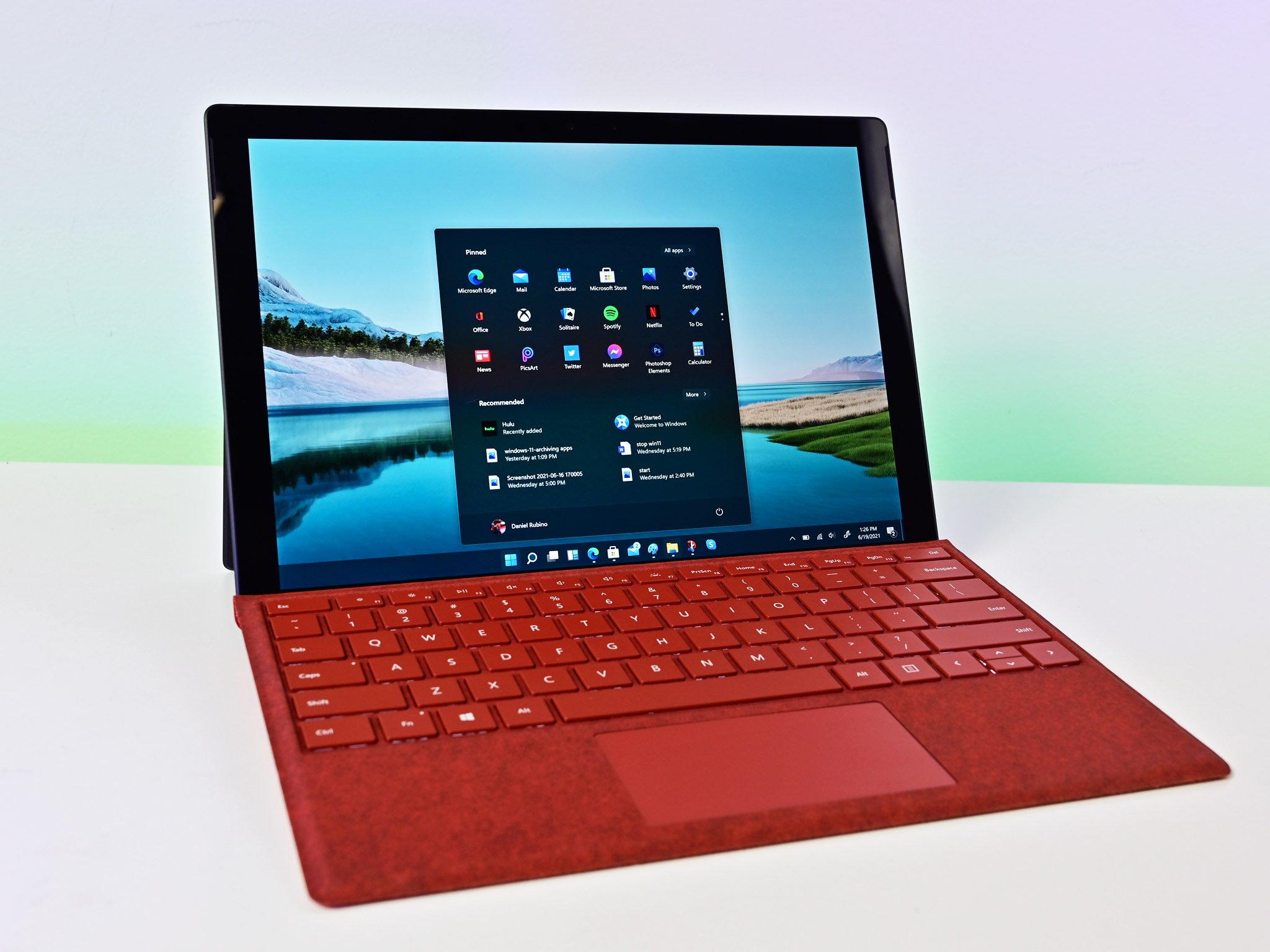
In the past, Microsoft may have wanted all developers to fully embrace UWP and hop on over to the Microsoft Store. That never happened. But instead of remaining fixated on developers rejecting the Microsoft Store and certain app technologies, Microsoft made a major shift when it comes to app development.
Opening the Microsoft Store to more types of apps and more packaging technologies is a bold move in the new direction. Supporting Android apps should help fill some gaps and get some big-name apps onto PCs. Allowing developers to keep 100% of their revenue when they use their own commerce platform is a strategy that shows that Microsoft isn't penny wise and pound foolish. It's finally recommitted to the Microsoft Store.
For the full scoop on what Windows 11 means for developers outside of all things Microsoft Store, check out Microsoft's blog post that details the Windows App SDK, simplified game development via a now-publicly-available GDK, and much more.

Sean Endicott is a tech journalist at Windows Central, specializing in Windows, Microsoft software, AI, and PCs. He's covered major launches, from Windows 10 and 11 to the rise of AI tools like ChatGPT. Sean's journey began with the Lumia 740, leading to strong ties with app developers. Outside writing, he coaches American football, utilizing Microsoft services to manage his team. He studied broadcast journalism at Nottingham Trent University and is active on X @SeanEndicott_ and Threads @sean_endicott_.
